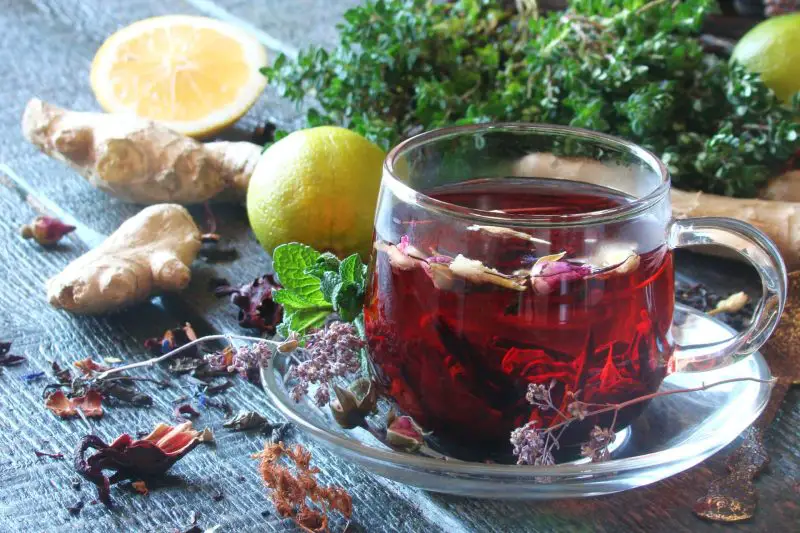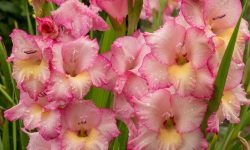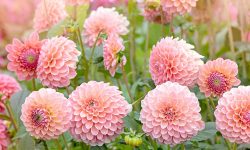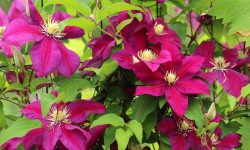Hibiscus tea is more than just a drink—it’s a celebration of color, flavor, and natural wellness. With its deep crimson hue and tangy-sweet taste, each cup offers a moment of refreshment that awakens the senses and soothes the spirit. Whether sipped hot on a quiet morning or served chilled on a sunny afternoon, hibiscus tea brings a touch of joy to every occasion.
Hibiscus tea has a long tradition and is cherished across cultures. It’s simple to make and allows for endless creativity. This tea offers powerful antioxidants and helps cool the body naturally. Its vibrant color and bold taste make it both nourishing and beautiful. In this guide, you’ll discover how to brew it perfectly at home, tailored to your own preferences.
What Is Hibiscus Tea?

Hibiscus tea is made from the calyces of the Hibiscus sabdariffa flower. These calyces are dried before brewing. The tea has a bold ruby-red color. Its taste is tangy, slightly sour, and refreshing. Some people compare it to cranberry juice. It can be served hot in winter or iced in summer.
This tea is popular in many countries across the world. In West Africa, it’s called bissap and served sweetened. In the Caribbean, it’s known as sorrel and often spiced. In the Middle East, it’s served warm during festive events. Many cultures value it for its cooling and hydrating effect.
Hibiscus tea contains no caffeine, so it’s suitable for any time of day. It’s rich in anthocyanins, giving it its red color. These compounds are known for their antioxidant properties. The tea may also support heart and liver health. Some drink it to help lower blood pressure naturally. Others enjoy it simply for its bright taste.
You can brew it using dried hibiscus flowers or prepackaged tea bags. Dried petals offer more control over strength and flavor. Many recipes add sugar, honey, or fruit juice. Lemon, mint, and ginger are also popular mix-ins. This makes the tea customizable to different tastes and cultures.
Health Benefits of Hibiscus Tea
Hibiscus tea offers more than just beautiful color and tangy flavor. It also provides many science-supported health advantages. This herbal infusion has been used for centuries in traditional medicine. Today, modern studies confirm many of its health-promoting effects. Regular consumption may improve cardiovascular function, liver health, metabolism, and more.
Supports Heart Health
Hibiscus tea may help reduce high blood pressure naturally. Multiple clinical studies confirm this effect in adults. The impact is strongest in people with mild to moderate hypertension. Drinking two to three cups daily may help lower systolic pressure. It also relaxes blood vessels and improves circulation. Reduced vascular tension lowers the heart’s workload. This effect supports long-term heart function and overall cardiovascular wellness.
Helps Lower Cholesterol
Hibiscus extract may reduce LDL cholesterol and triglycerides. These fats are linked to blocked arteries and heart problems. Hibiscus tea is not a substitute for prescribed medication. However, it can complement a heart-healthy diet. Drinking it daily may help regulate lipid profiles over time. It also helps improve HDL levels slightly. This makes it a useful natural support for cholesterol control.
Rich in Antioxidants
Hibiscus tea contains strong antioxidants like anthocyanins and polyphenols. These help protect your body from oxidative damage. Free radicals can harm cells and speed up aging. Antioxidants help neutralize these unstable molecules. This protects tissues and organs from stress-related damage. It may lower the risk of chronic conditions like diabetes, cancer, and arthritis. Daily intake supports immune defense and skin health.
Supports Liver Function
The liver filters toxins and supports digestion. Hibiscus helps maintain its proper function. Some studies show it can reduce fat buildup in liver cells. It may also help regulate liver enzymes. These enzymes indicate the health of liver tissue. Improved enzyme levels suggest better detoxification ability. Long-term tea use may reduce the risk of fatty liver disease. It supports metabolic function and better energy balance.
May Aid in Weight Management
Hibiscus tea may assist in healthy weight control. It helps slow the absorption of carbohydrates. This reduces blood sugar spikes after meals. The tea may also reduce appetite slightly. Drinking it before eating may promote satiety. It encourages lower calorie intake and less snacking. Some studies report reduced body weight and waist size. Combined with diet and exercise, results are more noticeable.
Naturally Caffeine-Free
Hibiscus tea does not contain caffeine. You can enjoy it any time without disrupting your sleep. It’s a soothing option for evening use. People who are sensitive to caffeine may find it a better alternative. It also reduces the risk of jitteriness or heart palpitations. Hibiscus tea is safe for children and older adults when consumed moderately. Its relaxing effects support calmness and hydration.
Choosing the Right Hibiscus for Tea
Not all hibiscus plants are good for tea. The best variety is Hibiscus sabdariffa, also called roselle. This plant grows in tropical and subtropical climates. Its red calyces are the part used for brewing, not the petals. These calyces are tart, rich in flavor, and packed with nutrients.
Dried hibiscus calyces are sold in herbal stores and markets. Look for whole pieces with a deep red color. They should smell fresh, not musty or bitter. Choose organic or food-grade products when possible. Avoid mixes with additives, dyes, or flavorings. Pure hibiscus ensures the best taste and health benefits.
You can also grow hibiscus at home if the climate allows. Harvest the calyces when they’re plump and bright red. Let them dry in a shaded, airy place. Once fully dry, store them in a sealed jar away from light.
If using fresh flowers, preparation is different. Rinse them gently to remove dust or insects. Remove the green base and yellow stamens. Only use clean, untreated blooms from edible varieties. Boil them gently to make a fresh and tangy tea. This method gives a brighter, floral flavor than dried calyces.
How to Make Hibiscus Tea Step by Step
Step 1: Gather Your Ingredients
Choose dried hibiscus calyces or fresh hibiscus flowers. You’ll also need clean water and any optional ingredients like honey, mint, or cinnamon. Make sure the hibiscus is food-grade and free from preservatives.
Step 2: Measure the Right Amount
Use about one tablespoon of dried hibiscus per cup of water. If using fresh flowers, use two tablespoons. Adjust the amount depending on how strong you want the tea.
Step 3: Boil the Water
Bring clean, filtered water to a rolling boil. Use a kettle or a saucepan. Once boiling, turn off the heat.
Step 4: Add the Hibiscus
Place the hibiscus into the hot water. Stir gently to release the color and flavor. You’ll see the water turn a deep red.
Step 5: Let It Steep
Cover and steep the tea for 5 to 15 minutes. For a lighter flavor, steep for less time. For a stronger taste, let it steep longer. Taste as you go to find the flavor you like.
Step 6: Strain the Tea
Use a fine mesh strainer or cheesecloth to remove the hibiscus. This gives you a clear, smooth tea.
Step 7: Add Optional Flavorings
Now is the time to add honey, sugar, agave, lemon juice, or spices like cinnamon. Stir well until dissolved.
Step 8: Serve and Enjoy
Drink your hibiscus tea warm for a soothing experience. Or chill it in the fridge and pour over ice for a refreshing cold drink.
Step 9: Store Leftovers Properly
If you make extra, store it in the fridge in a glass jar with a lid. Shake before serving. It’s best enjoyed within two days.
Tips to Customize Your Tea
Adjust the Strength
You can easily change how strong your hibiscus tea tastes. For a bold, tangy flavor, use more dried hibiscus calyces or steep them for 10–15 minutes. If you prefer a lighter tea, reduce the amount or steeping time to 5–7 minutes. Always taste your brew before adding anything else so you can adjust accordingly.
Choose Your Sweetener
Hibiscus tea has a naturally tart flavor, so many people like to sweeten it. Add honey for a floral touch, or use agave syrup for a smoother, vegan-friendly option. If you’re cutting calories, stevia or monk fruit extract are good alternatives. Be sure to stir in sweeteners while the tea is still warm so they dissolve completely.
Add Fresh Herbs
Fresh herbs can transform your tea into something even more refreshing. Add mint for a cooling effect, or try basil for a slightly spicy twist. Lemongrass adds a citrusy aroma and complements the tartness of hibiscus well. You can either steep the herbs with the hibiscus or add them right before serving for a fresh burst of flavor.
Infuse with Fresh Fruit
To make your tea naturally sweet and fruity, add slices of fresh fruit. Orange and pineapple balance the tartness, while apple adds gentle sweetness. Let the fruit sit in the hot or cold tea for a few minutes to release flavor. This also enhances the color and provides extra vitamins.
Try a Sparkling Version
For a fun and refreshing twist, mix cooled hibiscus tea with sparkling water. Use a 1:1 ratio or adjust based on your taste. Add ice, a slice of lime or lemon, and a sprig of mint for a fizzy drink that’s perfect for summer. It’s a great alternative to sugary soda or soft drinks.
Blend with Other Herbal Teas
Hibiscus pairs well with many herbal teas. Mix it with ginger for warmth and digestion, or add rosehips for extra vitamin C. Rooibos adds a mellow, earthy background. You can steep them together or brew each separately and blend afterward. Each combination brings a new flavor experience and additional health benefits.
Add Spices for Warmth
Spices make your tea richer and more comforting. Add a cinnamon stick while steeping for warmth, or a slice of fresh ginger to boost digestion. A few crushed cardamom pods can give the tea a slightly exotic, aromatic flavor. These spices are perfect for cool evenings or seasonal variations.
Keep Experimenting
Don’t hesitate to try new combinations. Use small test batches when adding new ingredients. Note down what works best for you—flavor strength, sweetness level, or blends. Over time, you’ll create a personal recipe that suits your taste and lifestyle.
When to Drink Hibiscus Tea
Morning Boost
Drinking hibiscus tea in the morning is a refreshing way to start the day. Its tart flavor wakes up your senses, and its natural antioxidants help support your immune system. Because it contains no caffeine, it won’t cause jitters or interfere with your natural energy rhythms. If you’re avoiding coffee, hibiscus tea makes a gentle, hydrating alternative.
Midday Hydration
During the afternoon, especially on warm days, hibiscus tea helps keep you hydrated. It can be enjoyed iced with a splash of citrus or fruit for extra flavor. Its light, fruity taste makes it easy to sip throughout the day, especially if you’re cutting back on sugary drinks or soft drinks. The natural electrolytes in hibiscus can also help replace fluids lost through sweat.
Before or After Meals
Hibiscus tea may support digestion, making it ideal before or after meals. Drinking a warm cup 30 minutes before eating may help reduce appetite, which is useful if you’re trying to manage weight. After meals, its acidity and antioxidant content can assist in breaking down food and easing bloating. It’s especially good when blended with ginger or mint for digestive comfort.
Evening Relaxation
In the evening, hibiscus tea serves as a calming, caffeine-free beverage. It helps you unwind without disrupting your sleep cycle. Many people enjoy it as a warm, soothing drink after dinner or before bed. For a sleep-friendly version, pair it with herbs like chamomile or lavender. Avoid adding too much sugar at night if you want better sleep quality.
Around Workouts
Hibiscus tea is a good option for light hydration before or after exercise. It contains natural antioxidants that may help reduce inflammation and support recovery. Enjoy it chilled with lemon or mixed with coconut water to replenish minerals and stay refreshed.
As a Wellness Ritual
Some people choose a specific time daily to enjoy hibiscus tea as part of a self-care routine. Whether it’s during a tea break, meditation, or journaling session, this small ritual can have calming effects. Sipping tea mindfully helps reduce stress and encourages you to stay connected with your body’s needs.
How to Store Hibiscus Tea and Dried Flowers
To maintain the flavor, color, and nutritional value of hibiscus, proper storage is essential. For dried hibiscus flowers, place them in airtight containers such as glass jars, ceramic canisters with tight lids, or food-grade metal tins. These materials protect the flowers from air, light, and moisture, all of which can degrade their quality over time. Avoid storing dried hibiscus in plastic bags or containers that aren’t airtight, as they allow air and humidity to seep in, which may lead to mold or loss of potency.
Choose a cool, dry, and dark storage location like a kitchen cabinet, pantry, or cupboard that doesn’t experience temperature fluctuations. Do not store them near the stove, dishwasher, or window, where heat and sunlight can quickly break down the antioxidants and aromatic compounds. When stored properly, dried hibiscus can last up to one year without significant loss of quality.
For brewed hibiscus tea, allow it to cool to room temperature before transferring it to a clean glass bottle or airtight pitcher. Store it in the refrigerator and consume it within 3 to 5 days for the best flavor and health benefits. Avoid plastic containers, especially those not designed for liquids, as they can absorb and alter the taste of the tea. Always use clean utensils when pouring to prevent contamination, and check for any sour smell or cloudiness before drinking, which could indicate spoilage.
Side Effects and Precautions
Hibiscus tea is generally safe for most people. However, it may cause side effects in certain cases. Some individuals experience allergic reactions like itching or rashes. If you are allergic to hibiscus or similar plants, avoid it.
Hibiscus may lower blood pressure significantly. People with low blood pressure should consult a doctor before use. It may also interact with medications for hypertension or diabetes. Speak with your doctor if you take such prescriptions regularly.
Pregnant women should avoid hibiscus tea. Some studies suggest it may stimulate uterine contractions. It’s best to stay cautious during pregnancy or breastfeeding.
Large amounts of hibiscus can affect liver enzymes. Drinking excessive tea daily over time may lead to complications. Stick to moderate consumption—one to two cups per day is safe for most.
In rare cases, hibiscus may cause dizziness or nausea. If this happens, stop drinking and monitor how your body reacts. Always start with small amounts if trying hibiscus tea for the first time.
Common Questions About Making Hibiscus Tea
Is hibiscus tea safe for everyone?
Hibiscus tea is generally safe for most people when consumed in moderation—about one to two cups per day. However, some individuals may be allergic to hibiscus or related plants, especially those in the mallow (Malvaceae) family. Allergic reactions can include rashes, itching, or swelling of the lips and mouth. If you’re trying hibiscus tea for the first time, start with a small amount and monitor your reaction.
Can hibiscus tea lower blood pressure too much?
Yes, it can. Hibiscus tea is known for its blood pressure-lowering effects. If you already have low blood pressure, drinking it might lead to dizziness, fatigue, or fainting. Even people with normal blood pressure should avoid drinking hibiscus tea on an empty stomach or right before physical activity. If you’re monitoring your blood pressure or taking medication for it, consult your doctor before adding hibiscus tea to your routine.
Does hibiscus tea interact with medications?
Yes. Hibiscus tea can interact with certain medications, especially those for high blood pressure, diabetes, or inflammation. It may enhance the effects of these drugs, potentially leading to excessively low blood sugar or blood pressure. If you take prescription medications regularly, especially antihypertensives or insulin, speak with your healthcare provider before drinking hibiscus tea frequently.
Is hibiscus tea safe during pregnancy or breastfeeding?
It’s best to avoid it. Some studies suggest hibiscus may stimulate uterine contractions, which could increase the risk of miscarriage or premature labor. There’s also not enough research to confirm that hibiscus tea is safe for breastfeeding mothers and their babies. To stay on the safe side, pregnant or breastfeeding women should avoid drinking hibiscus tea.
Can drinking too much hibiscus tea affect the liver?
Possibly. Excessive consumption of hibiscus tea over a long period may impact liver enzyme levels in some people. If you have a liver condition or are undergoing liver treatment, limit your intake to no more than two to three cups a day, unless advised otherwise by your doctor.
Final Thoughts on Making Hibiscus Tea
Hibiscus tea is a refreshing, healthful, and easy-to-make beverage with countless variations. Whether you enjoy it steaming hot on a cold evening or chilled with mint in the summer, it offers both flavor and wellness in every sip.
Mastering the basics of preparation gives you freedom to experiment with ingredients, create your own blends, and serve hibiscus tea in ways that suit your taste and lifestyle. With the right dried flowers, a good brewing method, and a little creativity, you can make a vibrant, delicious drink that refreshes and nourishes at the same time.






